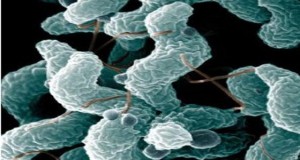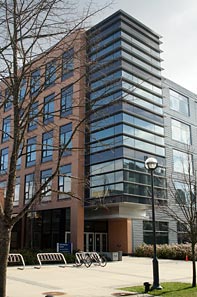Campylobacter jejuni is the leading cause of bacterial-induced diarrheal disease in the developed world, infecting over 1% of the North American population each year. Campylobacteriosis is usually caused by ingesting contaminated water (as in the Walkerton Crisis), raw milk or poultry, the most frequent carrier of the bacteria. Ironically, despite C. jejuni’s prevalence as a human pathogen, relatively little is known about how this organism causes disease.
Our lab’s research focuses on exploring the molecular mechanisms underlying C. jejuni pathogenesis, with particular emphases on understanding how the bacterium interacts with human cells to cause disease as well as investigating how it survives adverse conditions during environmental transmission. One project area focuses on a specific stress response called the stringent response that we have found to be critical for virulence, antibiotic resistance, and environmental survival of C. jejuni and Helicobacter pylori, a related pathogen that causes gastric ulcers and cancer. Another line of research focuses on C. jejuni biofilms; specifically, the genetic and structural components involved in biofilm development and the roles of biofilms in virulence and transmission. Our lab is also exploring several systems C. jejuni uses to navigate both in vivo and ex vivo environments and how these intersect to form regulatory networks. A fourth area focuses on host responses to C. jejuni infection. The overall goals of these studies are to create a better understanding of both specific and general mechanisms of C. jejuni virulence and transmission, to use these findings as a model for related organisms, and potentially to develop novel antimicrobial and vaccine strategies to reduce the incidence of C. jejuni-related disease.



